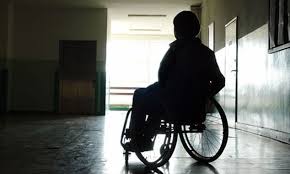Women’s Rights : Where are women with disabilities?
In this Women’s month, much focus has been placed on the 60th anniversary of the women’s march to the Union Buildings in Pretoria on 9 August 1956. What a tremendous day it was all those years ago when 20 000 women stood up to the Government, protesting against the proposed pass laws! Recent country-wide celebrations have paid homage to the strength, passion & sheer guts of women when required to protect themselves and their families, and rightly so.
The question I want to raise is this: where do women with disabilities feature in women’s rights in South Africa today? Do they even feature at all?
Some would say they don’t.
Research shows that women across all spheres of society do not enjoy equal rights, as we see below
- Women in the Workplace at the University of Johannesburg provides research that reports women receiving 15% less in remuneration than males.
- RapeCrisis reports that of the 62 649 sexual offences that were reported, only 5 484 resulted in a conviction – a shocking 1%.

When it comes to disability, that discrepancy is so much greater. Women with disabilities are 1.5 to 10 times more likely to suffer domestic abuse and rape, and when such cases are reported, the justice system, police services and care workers are not equipped to deal with them. They are also less likely to have access to social, reproductive and psychological counselling as so-called able-bodied women on the mistaken reasoning that they are somehow asexual or that nobody would want a physical relationship with them anyway. Many women & girls with disabilities are forced to undergo sterilisation without their consent.
Many misperceptions exist around the sexuality of women with disabilities, with some attackers going as far as not considering women & girls with disabilities as human beings!
Initiatives which promote the prevention of violence against women and girls rarely include or reach out to women with disabilities, in particular those with mental or intellectual disabilities. There are no statistics for the actual incidence of rape cases, reported or otherwise, amongst women with disabilities. This could be because the credibility of women with disabilities is somehow questioned or simply because statistics around disability have not been differentiated into gender.
Furthermore, it is disturbing to note that there is no material on gender-based violence available in Braille, on audiotape or in large font format, nor are there dedicated shelters for women with disabilities and most existing shelters are not accessible to women with disabilities.
So what do we say to each other his Women’s Month? Let’s spare a thought for women who do not enjoy the same fundamental freedoms that we do. Civil society definitely has a role to play in including women with disabilities when planning services, treatment programs and prevention campaigns. And let’s not forget Government who must provide all services available to the general public also to women with disabilities, on an equal basis and to include women with disabilities in the decision-making process.
A large part of this inclusion is accessibility; suitable transport to and from services, supported communication for women with hearing loss or speech difficulties, adequately trained and sensitised health care workers, easy to understand literature and information, as well as campaigns aimed at raising awareness of the discrepancies in attitude towards women with disabilities and promoting their rights, to name a few.
Luckily we have the White Paper on the Rights of Persons with Disabilities to guide us in this, but it is up to us to ensure that the White Paper is enforced.
Where do you stand on this issue? And are you prepared to get involved in helping to change the life of a fellow woman, a sister?


